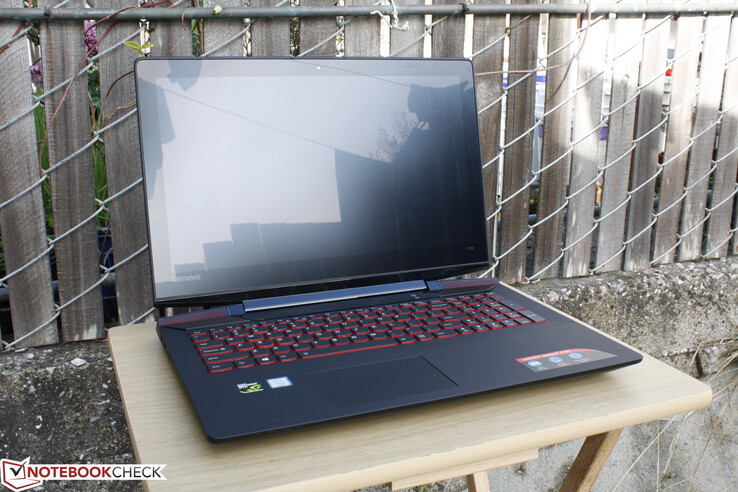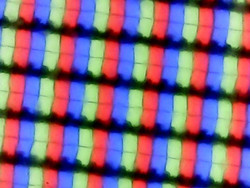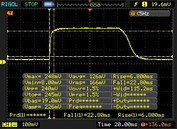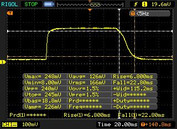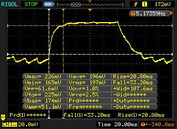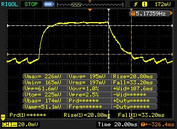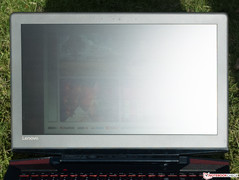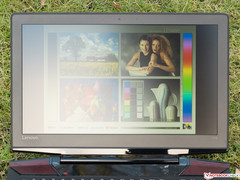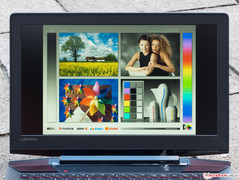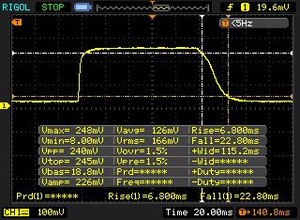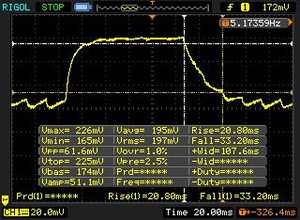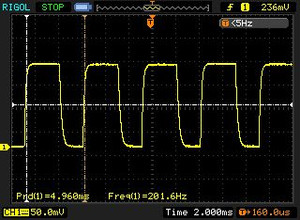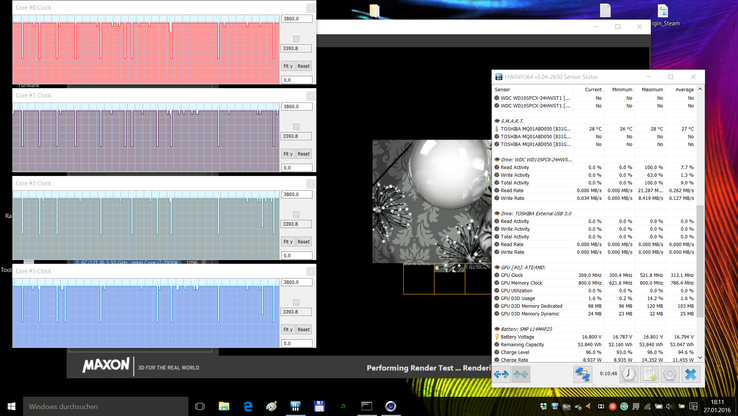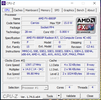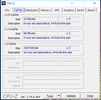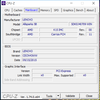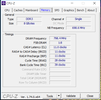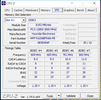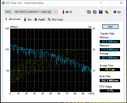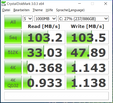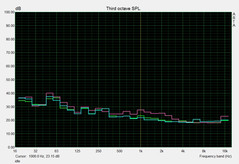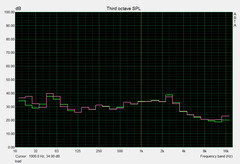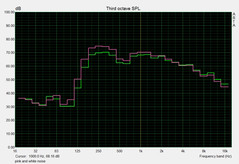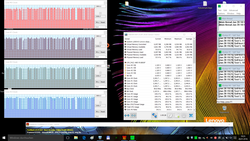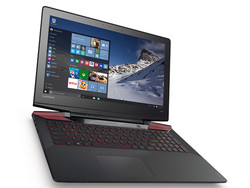Lenovo IdeaPad Y700-15ACZ Notebook Review
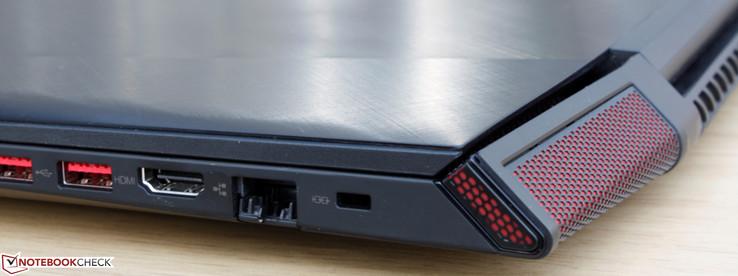
For the original German review, see here.
Regardless whether 15.6 or 17-inch, the successors of Lenovo's Y50 and Y70 series are all called Y700 and are advertised as gaming laptops by the manufacturer. Each size is available in different configurations. We have already reviewed the 17-inch Lenovo IdeaPad Y700-17ISK with a very similar case in December 2015. At the time of testing, the German Lenovo site only listed four 15-inch variants for prices between 999 and 1699 Euros (~$1110 and ~$1887). These are based on different Intel Skylake quad-core CPUs and the Nvidia GeForce GTX 960M. Apart from a plethora of 15-inch models, you could also take a look at several 17-inch models at a big Berliner price-comparison portal.
Lenovo kept its options open and not only offers models with Intel/Nvidia power but also variants like our test model, which completely rely on AMD for graphics and CPU. Our Y700-14ACZ weighs in at 2.7 kg and is available for just under 1000 Euros (~$1111). It comes with the current Carrizo top model for notebooks called AMD FX-8800P (4x 2.1 to 3.4 GHz, 12 to 35 Watt TDP), which is set to 15 Watt according to CPU-Z here. However, in view of our benchmark results, we doubt that and assume a higher TDP. The processor is combined with 8 GB of RAM. The AMD Radeon R9 M385X mid-range GPU with 2 GB dedicated GDDR5 VRAM handles 3D graphics. In addition, the SoC integrates the AMD Radeon R7 (Carrizo) GPU. Moreover, you can enjoy a matte IPS display with 1920x1080 pixels.
We compare our test model to two 15-inch devices, the Acer Aspire V5-591G-71K2 and the HP Envy 15-ae020ng, with similar performance and price which achieved quite good ratings. In addition, we add the Y700-15ISK variant with Intel and Nvidia hardware for about 1200 Euros (~$1333) to our comparison. The fifth model is the not necessarily comparable HP EliteBook 745 G3 with professional AMD Pro A12-8800B, which, however, is technically almost identical to the FX-8800P.
Case
Case, connectivity, input devices and speakers remained the same as the Lenovo IdeaPad Y700-15ISK 80NW's. Please check our review for information about these.
Display
The test model uses a matte IPS display from Samsung with mediocre brightness. Its Full HD resolution is ideal for gamers. We did not notice the slow response time in a negative way. The brightness distribution of 83% is about average, but unfortunately significant screen bleeding is visible in completely black images along the bottom edge. This weakness is not apparent during normal use.
| |||||||||||||||||||||||||
Brightness Distribution: 83 %
Center on Battery: 236 cd/m²
Contrast: 1180:1 (Black: 0.2 cd/m²)
ΔE ColorChecker Calman: 7 | ∀{0.5-29.43 Ø4.78}
ΔE Greyscale Calman: 6.7 | ∀{0.09-98 Ø5}
59% sRGB (Argyll 1.6.3 3D)
38% AdobeRGB 1998 (Argyll 1.6.3 3D)
41.33% AdobeRGB 1998 (Argyll 3D)
59.8% sRGB (Argyll 3D)
39.99% Display P3 (Argyll 3D)
Gamma: 2.39
CCT: 6288 K
The black value of only 0.2 cd/m2 is exemplary, which conforms to black appearing deep. As a result, the display achieves a great contrast of 1180:1, although its maximum brightness is not very high. In our comparison group, only the HP EliteBook is significantly brighter. Due to its marginally higher black value, it delivers a similarly high contrast. In particular, the Acer Aspire and HP Envy fall significantly behind in this aspect. All things considered, there is little to complain about sharpness.
Let's turn to color shifts represented in DeltaE values. Serious image editing is first possible with DeltaE values smaller than 3. For an IPS model, our device only accomplishes a not that good 7 (gray scale + ColorChecker) out-of-the-box. However, the competitors do not perform much better. You can see in the much too high deviations of the Acer and HP, that they only use cheaper TN panels. The color profile linked in the box removed the slight green tint of our sample. However, the AdobeRGB coverage of only 38%, which is much too low for (semi-) professional graphics work, cannot be improved.
| Lenovo Y700-15ACZ Samsung SDC3752 (LTN156HL09401) | Acer Aspire V5-591G-71K2 ChiMei N156HGE-EAL | HP Envy 15-ae020ng CMN15C4 | Lenovo Ideapad Y700 15ISK 80NW LG Philips | HP EliteBook 745 G3 | |
|---|---|---|---|---|---|
| Display | 94% | -2% | -4% | 76% | |
| Display P3 Coverage (%) | 39.99 | 84.9 112% | 39.3 -2% | 38.55 -4% | 75.7 89% |
| sRGB Coverage (%) | 59.8 | 99.8 67% | 58.7 -2% | 57.6 -4% | 95.8 60% |
| AdobeRGB 1998 Coverage (%) | 41.33 | 83.3 102% | 40.64 -2% | 39.86 -4% | 74.5 80% |
| Response Times | 13% | 22% | 15% | ||
| Response Time Grey 50% / Grey 80% * (ms) | 54 ? | 44 ? 19% | 40.8 ? 24% | 46.8 ? 13% | |
| Response Time Black / White * (ms) | 30 ? | 28 ? 7% | 24 ? 20% | 25.2 ? 16% | |
| PWM Frequency (Hz) | 200 ? | 200 ? | 58.1 | ||
| Screen | -16% | -39% | -8% | 16% | |
| Brightness middle (cd/m²) | 236 | 249 6% | 240 2% | 258.6 10% | 319 35% |
| Brightness (cd/m²) | 226 | 240 6% | 226 0% | 242 7% | 301 33% |
| Brightness Distribution (%) | 83 | 86 4% | 88 6% | 88 6% | 74 -11% |
| Black Level * (cd/m²) | 0.2 | 0.48 -140% | 0.48 -140% | 0.277 -39% | 0.29 -45% |
| Contrast (:1) | 1180 | 519 -56% | 500 -58% | 934 -21% | 1100 -7% |
| Colorchecker dE 2000 * | 7 | 10.15 -45% | 12.14 -73% | 8.1 -16% | 7.23 -3% |
| Greyscale dE 2000 * | 6.7 | 12.13 -81% | 12.74 -90% | 7.23 -8% | 6 10% |
| Gamma | 2.39 92% | 2.48 89% | 2.49 88% | 1.99 111% | 2.14 103% |
| CCT | 6288 103% | 13445 48% | 15295 42% | 6567 99% | 6904 94% |
| Color Space (Percent of AdobeRGB 1998) (%) | 38 | 74 95% | 38 0% | 36.5 -4% | 65.8 73% |
| Color Space (Percent of sRGB) (%) | 59 | 100 69% | 59 0% | 57.2 -3% | 95.3 62% |
| Total Average (Program / Settings) | 30% /
12% | -21% /
-30% | 3% /
-3% | 36% /
29% |
* ... smaller is better
On cloudy days, you have to deliberately position the screen towards the sky in order to make it difficult to read from the matte, yet not overly bright display. However, it is not possible to read from the screen in sunlight (see image). The image in the middle depicts an unfavorable position in the shade, the right one shows an ideal scenario with a doorway behind.
IPS panels are known for wide viewing angles, which are also delivered by our test model. When looking at the screen from below or the sides, brightness and contrast loss are small and colors remain unchanged. The image only suffers a bit when viewed from above at a certain range of angles. The images in the corners of our viewing-angle collage show simultaneous horizontal and vertical shifts, which are seldom in practice. While the colors actually deteriorate a bit, the effect is not that big as the images suggest.
Display Response Times
| ↔ Response Time Black to White | ||
|---|---|---|
| 30 ms ... rise ↗ and fall ↘ combined | ↗ 7 ms rise | |
| ↘ 23 ms fall | ||
| The screen shows slow response rates in our tests and will be unsatisfactory for gamers. In comparison, all tested devices range from 0.1 (minimum) to 240 (maximum) ms. » 79 % of all devices are better. This means that the measured response time is worse than the average of all tested devices (20.2 ms). | ||
| ↔ Response Time 50% Grey to 80% Grey | ||
| 54 ms ... rise ↗ and fall ↘ combined | ↗ 21 ms rise | |
| ↘ 33 ms fall | ||
| The screen shows slow response rates in our tests and will be unsatisfactory for gamers. In comparison, all tested devices range from 0.165 (minimum) to 636 (maximum) ms. » 90 % of all devices are better. This means that the measured response time is worse than the average of all tested devices (31.6 ms). | ||
Screen Flickering / PWM (Pulse-Width Modulation)
| Screen flickering / PWM detected | 200 Hz | ≤ 20 % brightness setting | |
The display backlight flickers at 200 Hz (worst case, e.g., utilizing PWM) Flickering detected at a brightness setting of 20 % and below. There should be no flickering or PWM above this brightness setting. The frequency of 200 Hz is relatively low, so sensitive users will likely notice flickering and experience eyestrain at the stated brightness setting and below. In comparison: 53 % of all tested devices do not use PWM to dim the display. If PWM was detected, an average of 8111 (minimum: 5 - maximum: 343500) Hz was measured. | |||
Performance
Processor
We have already mentioned the key figures of the used Carrizo top model AMD FX-8800P in the introduction. It is almost identical to the AMD Pro A12-8800B for professional use in the Lenovo EliteBook 745 G3. Despite a supposedly same TDP of 15 Watt (see above), our CPU performs significantly better than the latter. It outperforms the Intel Core i7-5500U (2x 2.4 to 3 GHz, Hyper-Threading, 15 Watt TDP) dual-core CPU in the multi-core tests of the Cinebench benchmarks. With only one thread, the AMD typical, low single-thread performance becomes apparent again, and the AMD quad-core falls behind. The i7-6700HQ chips (4x 2.6 to 3.5 GHz, Hyper-Threading, 45 Watt TDP) in the Acer and in the Y700-15ISK play in a completely different league. Actually, the performance should be sufficient for not slowing down most games.
When we run Cinebench R15 in a loop, the clock rate remains at 3.4 GHz most of the time, but the big problem of the Lenovo IdeaPad Y700-15ACZ already shows here: Again and again, the clock rates fall to 1.4 GHz for a short time in mostly all four cores. We suspect that this is why it is cumbersome to play almost all games. More about that later.
| Cinebench R10 | |
| Rendering Multiple CPUs 32Bit (sort by value) | |
| Lenovo Y700-15ACZ | |
| Acer Aspire V5-591G-71K2 | |
| HP Envy 15-ae020ng | |
| Lenovo Ideapad Y700 15ISK 80NW | |
| HP EliteBook 745 G3 | |
| Rendering Single 32Bit (sort by value) | |
| Lenovo Y700-15ACZ | |
| Acer Aspire V5-591G-71K2 | |
| HP Envy 15-ae020ng | |
| Lenovo Ideapad Y700 15ISK 80NW | |
| HP EliteBook 745 G3 | |
System Performance
Using the test model was not much fun. First of all, the lack of an SSD has a negative impact. Booting takes a long time for today's standards. Launching games is particularly slow. In addition, the test model tends to show delays, during which it does not respond at all. In particular, after ending a game, it sometimes takes an eternity until the device becomes responsive again. As far as the reviewer can recall, the subjective performance of notebooks with an Intel Core i3 chip (dual-core, Hyper-Threading, no Turbo, 15 Watt TDP) and conventional hard drive felt better. We added the Asus F555LJ (Core i3-5010U, GeForce 920M) for 500 Euros (~$555) in our diagram.
Thus, the low scores in PCMarks 7 and 8 are not surprising. In particular, the productivity score (PCMark 7) is significantly worse than expected. Something slows the system down. Presumably, Lenovo did not correctly implement the components and made mistakes in the configuration and/or the BIOS or UEFI. We have certainly checked this, but we did not find a solution in the few configuration options. We suspect that this problem can only be fixed with a BIOS/UEFI update.
| PCMark 7 Score | 2615 points | |
| PCMark 8 Home Score Accelerated v2 | 3039 points | |
| PCMark 8 Work Score Accelerated v2 | 3610 points | |
Help | ||
| PCMark 8 | |
| Home Score Accelerated v2 (sort by value) | |
| Lenovo Y700-15ACZ | |
| Asus F555LJ-XX110H | |
| Acer Aspire V5-591G-71K2 | |
| Lenovo Ideapad Y700 15ISK 80NW | |
| HP EliteBook 745 G3 | |
| Work Score Accelerated v2 (sort by value) | |
| Lenovo Y700-15ACZ | |
| Asus F555LJ-XX110H | |
| Acer Aspire V5-591G-71K2 | |
| Lenovo Ideapad Y700 15ISK 80NW | |
| HP EliteBook 745 G3 | |
Storage Device
Just above 100 MB/s in sequential reading (CrystalDiskMark 3.0) is not a great value for a modern 5400-RPM hard drive. The HP Envy achieved 120 MB/s. HD Tune reports an average transfer rate of 83 MB/s for the 1 TB hard drive, which is slightly above the average over comparable HDDs. The storage device performs quite well in reading small, distributed data blocks with several threads (4K Read). However, no hard drive is able to keep up with SSDs, even the hybrid model in the HP Envy cannot.
| Lenovo Y700-15ACZ WDC Slim WD10SPCX-24HWST1 | Acer Aspire V5-591G-71K2 Toshiba MQ02ABF050H (SSHD 500 + 8 GB) | HP Envy 15-ae020ng Seagate ST1000LM014 Solid State Hybrid Drive | Lenovo Ideapad Y700 15ISK 80NW Samsung MZNLN128HCGR-000L2 | HP EliteBook 745 G3 Samsung SSD PM851 256 GB MZNTE256HMHP | |
|---|---|---|---|---|---|
| CrystalDiskMark 3.0 | -27% | 44% | 12431% | 9525% | |
| Read Seq (MB/s) | 103.2 | 100.8 -2% | 116 12% | 515 399% | 446.1 332% |
| Write Seq (MB/s) | 103.5 | 79 -24% | 116 12% | 156.5 51% | 268.9 160% |
| Read 4k (MB/s) | 0.368 | 0.377 2% | 0.609 65% | 37.81 10174% | 27.12 7270% |
| Write 4k (MB/s) | 1.143 | 1.003 -12% | 2.954 158% | 112 9699% | 84.4 7284% |
| Read 4k QD32 (MB/s) | 0.933 | 0.243 -74% | 1.433 54% | 379.9 40618% | 239.8 25602% |
| Write 4k QD32 (MB/s) | 1.138 | 0.586 -49% | 0.733 -36% | 156.4 13643% | 188.9 16499% |
Graphics Card
In terms of performance, the incorporated AMD Radeon R9 M385X with 2 GB of GDDR5 VRAM (4800 MHz effectively, 128-bit interface) ranks in before the Nvidia GeForce GTX 960M according to the 3DMark 11 Graphics score. In the Firestrike benchmark of 3DMark (2013) it comes in behind, but before the GTX 950M. Thus, it belongs to the upper mid-range.
It still uses the GCN architecture from the 7000 desktop series. DirectX 12 is supported with feature level 11_1 now. The special AMD feature, Mantle, can be enabled in several games like Dragon Age: Inquisition and might be a powerful Direct3D replacement. However, we faced graphics errors and crashes again and again and dare to predict that the end of Mantle is near, since DirectX 12 is supposed to reduce the overhead, too. We noted whether Mantle or Direct3D was used for each game.
| 3DMark 06 Standard Score | 14024 points | |
| 3DMark Vantage P Result | 12453 points | |
| 3DMark 11 Performance | 4350 points | |
| 3DMark Cloud Gate Standard Score | 8890 points | |
| 3DMark Fire Strike Score | 2982 points | |
Help | ||
| 3DMark | |
| 1280x720 Cloud Gate Standard Graphics (sort by value) | |
| Lenovo Y700-15ACZ | |
| Acer Aspire V5-591G-71K2 | |
| HP Envy 15-ae020ng | |
| Lenovo Ideapad Y700 15ISK 80NW | |
| HP EliteBook 745 G3 | |
| 1920x1080 Fire Strike Graphics (sort by value) | |
| Lenovo Y700-15ACZ | |
| Acer Aspire V5-591G-71K2 | |
| HP Envy 15-ae020ng | |
| Lenovo Ideapad Y700 15ISK 80NW | |
| HP EliteBook 745 G3 | |
| 3DMark 11 - 1280x720 Performance GPU (sort by value) | |
| Lenovo Y700-15ACZ | |
| Acer Aspire V5-591G-71K2 | |
| HP Envy 15-ae020ng | |
| Lenovo Ideapad Y700 15ISK 80NW | |
| HP EliteBook 745 G3 | |
Gaming Performance
Now, we have to face the truth: Even if the extensive benchmarks list leaves a different impression, you can hardly play any 3D game without frustration. The reason is slowdowns appearing in short intervals. It is strange that they do not show in the frame rates recorded by FRAPS, but, subjectively, they are all the more disturbing. It's like a car going at a constant speed where the driver touches the brakes for a short time again and again. Only masochists will stand that for longer than 3 minutes. The frequency and the intervals of the slowdowns conform well to the clock rate decreases of the CPU to 1.4 GHz mentioned above. Without this bad habit, many 3D games could be enjoyed in high settings. We do not know why exactly Thief from 2014 and the brand-new Just Cause 3 ran extremely slowly.
Since the Y700-15ACZ cannot display a resolution of 1366x768, which we use in several of our benchmarks, with the preinstalled driver, we used the 1280x720 resolution with a similar pixel count in these measurements.
| low | med. | high | ultra | |
|---|---|---|---|---|
| The Elder Scrolls V: Skyrim (2011) | 57.3 | 49.8 | 43.2 | 35.5 |
| Crysis 3 (2013) | 48.5 | 36.2 | 14.8 | |
| Tomb Raider (2013) | 133.1 | 125.4 | 98 | 43.5 |
| BioShock Infinite (2013) | 89 | 79.6 | 75.1 | 32.4 |
| Metro: Last Light (2013) | 36.9 | 35.6 | 34.7 | 21.7 |
| Battlefield 4 (2013) | 66.8 | 56.1 | 52.5 | 26.2 |
| Thief (2014) | 25 | 19.5 | 22.8 | 19.2 |
| Middle-earth: Shadow of Mordor (2014) | 60.3 | 51.2 | 37.8 | 27.5 |
| Civilization: Beyond Earth (2014) | 0 game wont start | 0 game wont start | 0 game wont start | 0 game wont start |
| Dragon Age: Inquisition (2014) | 50.6 | 42 | 27.3 | 17.6 |
| Battlefield Hardline (2015) | 60.5 | 39.7 | 25.8 | |
| Dirt Rally (2015) | 124.2 | 53 | 40.7 | 27.1 |
| The Witcher 3 (2015) | 53.6 | 44.4 | 21.8 | |
| Batman: Arkham Knight (2015) | 43 | 40 | 24 | |
| Metal Gear Solid V (2015) | 57.3 | 56 | 41.4 | 25.2 |
| Mad Max (2015) | 47.9 | 32 | 29.1 | |
| FIFA 16 (2015) | 59.2 | |||
| Anno 2205 (2015) | 47.4 | 50.5 | 24.1 | 9.9 |
| Call of Duty: Black Ops 3 (2015) | 39.8 | 38.9 | 21.1 | |
| Fallout 4 (2015) | 39.2 | 35.5 | 23.3 | 19.3 |
| Star Wars Battlefront (2015) | 34.6 | 31.4 | 20.9 | |
| Assassin's Creed Syndicate (2015) | 13.3 | 12.5 | ||
| Rainbow Six Siege (2015) | 74 severe graphical problems | 64 severe graphical problems | 48 severe graphical problems | 27 severe graphical problems |
| Just Cause 3 (2015) | 21.4 | 22.1 | 18.8 | 17.5 |
| Rise of the Tomb Raider (2016) | 39.4 | 34.8 | 19.7 | 15.2 |
Emissions
System Noise
The fan is not even silent when the Lenovo IdeaPad does not need to work. However, the noise can hardly be distinguished from the usual environment noise half a meter from the device. When a processor benchmark is launched, the CPU fan gets slowly faster without steps until a quiet noise is audible. Under maximum load during our stress test with Prime95 and FurMark, the notebook gets quieter again (heavier throttling). The measured emissions are on par with comparable notebooks' overall.
Noise level
| Idle |
| 32 / 33 / 36 dB(A) |
| HDD |
| 33 dB(A) |
| Load |
| 44 / 45 dB(A) |
 | ||
30 dB silent 40 dB(A) audible 50 dB(A) loud |
||
min: | ||
| Lenovo Y700-15ACZ Radeon R9 M385X, FX-8800P | Acer Aspire V5-591G-71K2 GeForce GTX 950M, 6700HQ | HP Envy 15-ae020ng GeForce GTX 950M, 5500U | Lenovo Ideapad Y700 15ISK 80NW GeForce GTX 960M, 6700HQ | HP EliteBook 745 G3 Radeon R7 (Carrizo), Pro A12-8800B | |
|---|---|---|---|---|---|
| Noise | 2% | 3% | 4% | 15% | |
| Idle Minimum * (dB) | 32 | 32.6 -2% | 32.9 -3% | 30.4 5% | 29 9% |
| Idle Average * (dB) | 33 | 32.6 1% | 32.9 -0% | 30.5 8% | 29 12% |
| Idle Maximum * (dB) | 36 | 32.6 9% | 36.7 -2% | 33.3 7% | 31.1 14% |
| Load Average * (dB) | 44 | 42.7 3% | 37.2 15% | 41.4 6% | 35.6 19% |
| Load Maximum * (dB) | 45 | 45.5 -1% | 42 7% | 47 -4% | 35.6 21% |
* ... smaller is better
Temperature
Even under load the test model did not reach critical temperatures anywhere. However, 50 °C on the underside could already be too much for gaming on the lap. If the notebook sits on a table, the left palm rest is most important for gamers. The temperature does not exceed 27 °C here, while we have measured a quite high 43 °C right of the touchpad. It is striking that the temperatures of the Acer Aspire V5 get very hot in some spots with up to 68 °C on the top side.
Our screenshot shows that the core clock rates of the FX-8800P heavily fluctuate and fall to 1.4 GHz time and again when the CPU and GPU are used to capacity. We cannot provide information about the temperatures, since HWiNFO64 did not display any.
(-) The maximum temperature on the upper side is 48.8 °C / 120 F, compared to the average of 36.9 °C / 98 F, ranging from 21.1 to 71 °C for the class Multimedia.
(-) The bottom heats up to a maximum of 49.4 °C / 121 F, compared to the average of 39.2 °C / 103 F
(+) In idle usage, the average temperature for the upper side is 26.4 °C / 80 F, compared to the device average of 31.3 °C / 88 F.
(-) The palmrests and touchpad can get very hot to the touch with a maximum of 42.8 °C / 109 F.
(-) The average temperature of the palmrest area of similar devices was 28.7 °C / 83.7 F (-14.1 °C / -25.3 F).
| Lenovo Y700-15ACZ Radeon R9 M385X, FX-8800P | Acer Aspire V5-591G-71K2 GeForce GTX 950M, 6700HQ | HP Envy 15-ae020ng GeForce GTX 950M, 5500U | Lenovo Ideapad Y700 15ISK 80NW GeForce GTX 960M, 6700HQ | HP EliteBook 745 G3 Radeon R7 (Carrizo), Pro A12-8800B | |
|---|---|---|---|---|---|
| Heat | -19% | -11% | 3% | -6% | |
| Maximum Upper Side * (°C) | 48.8 | 67.7 -39% | 49 -0% | 43.8 10% | 39.5 19% |
| Maximum Bottom * (°C) | 49.4 | 47.1 5% | 51.9 -5% | 47.8 3% | 43 13% |
| Idle Upper Side * (°C) | 27.5 | 34.1 -24% | 31.5 -15% | 27.4 -0% | 32.9 -20% |
| Idle Bottom * (°C) | 26.1 | 30.6 -17% | 32.6 -25% | 26.8 -3% | 35 -34% |
* ... smaller is better
Energy Management
Power Consumption
Smart is something different: The IdeaPad is power hungry. 0.4 and 0.6 Watt, respectively, when off or in standby are above average for a multimedia notebook. Under load, our test model requires significantly more energy than similarly fast of even faster Intel/Nvidia-based models. The 135-Watt power adapter can cope with the maximum power consumption.
| Off / Standby | |
| Idle | |
| Load |
|
Key:
min: | |
| Lenovo Y700-15ACZ Radeon R9 M385X, FX-8800P | Acer Aspire V5-591G-71K2 GeForce GTX 950M, 6700HQ | HP Envy 15-ae020ng GeForce GTX 950M, 5500U | Lenovo Ideapad Y700 15ISK 80NW GeForce GTX 960M, 6700HQ | HP EliteBook 745 G3 Radeon R7 (Carrizo), Pro A12-8800B | |
|---|---|---|---|---|---|
| Power Consumption | 23% | 53% | 38% | ||
| Idle Minimum * (Watt) | 8 | 6 25% | 4.1 49% | 6.2 22% | |
| Idle Average * (Watt) | 12 | 9.8 18% | 6.9 42% | 9.4 22% | |
| Idle Maximum * (Watt) | 20 | 11.4 43% | 9.2 54% | 14.8 26% | |
| Load Average * (Watt) | 100 | 84 16% | 45.3 55% | 44.8 55% | |
| Load Maximum * (Watt) | 134 | 113.5 15% | 47.7 64% | 45.2 66% |
* ... smaller is better
Battery Life
As the battery capacity is equal to the Acer's and the HP's, a direct comparison is possible. While idle as well as under load, the high power consumption leads to relatively low battery runtimes. Only in our realistic WLAN test (our test criteria) at medium brightness does the IdeaPad not fall behind that much and achieves a useful three-and-a-half hours. The results confirm that Intel platforms are very superior in this aspect.
| Lenovo Y700-15ACZ | Acer Aspire V5-591G-71K2 | HP Envy 15-ae020ng | Lenovo Ideapad Y700 15ISK 80NW | HP EliteBook 745 G3 | |
|---|---|---|---|---|---|
| Battery runtime | 74% | 106% | 70% | 17% | |
| Reader / Idle (h) | 4.8 | 11.9 148% | 12.6 163% | 10.3 115% | 7.4 54% |
| WiFi v1.3 (h) | 3.5 | 4.3 23% | 5.1 46% | 5.9 69% | 3.1 -11% |
| Load (h) | 1.2 | 1.8 50% | 2.5 108% | 1.5 25% | 1.3 8% |
Pros
Cons
Verdict
All things considered, the Lenovo IdeaPad Y700-15ACZ left a mediocre impression. We do not want to explain this in detail here, since:
Lenovo presents a gaming notebook with which you cannot play computer games well in its current state. Thus, we advise against buying it. The manufacturer definitely needs to revise it and check the clock rate problem mentioned in the test.
If you like the case design, you would be better off buying one of the (more expensive) Intel/Nvidia variants of the Y700 series - we are sorry about that for AMD.
Note: We decrease the total rating by 6% because of extensive stuttering during 3D applications. The rating would have been 80% if the FX-8800P had clocked constantly. Currently, the Y700-15ACZ only deserves a "satisfactory".
Lenovo Y700-15ACZ
- 01/31/2016 v4.1 (old)
Sven Kloevekorn




